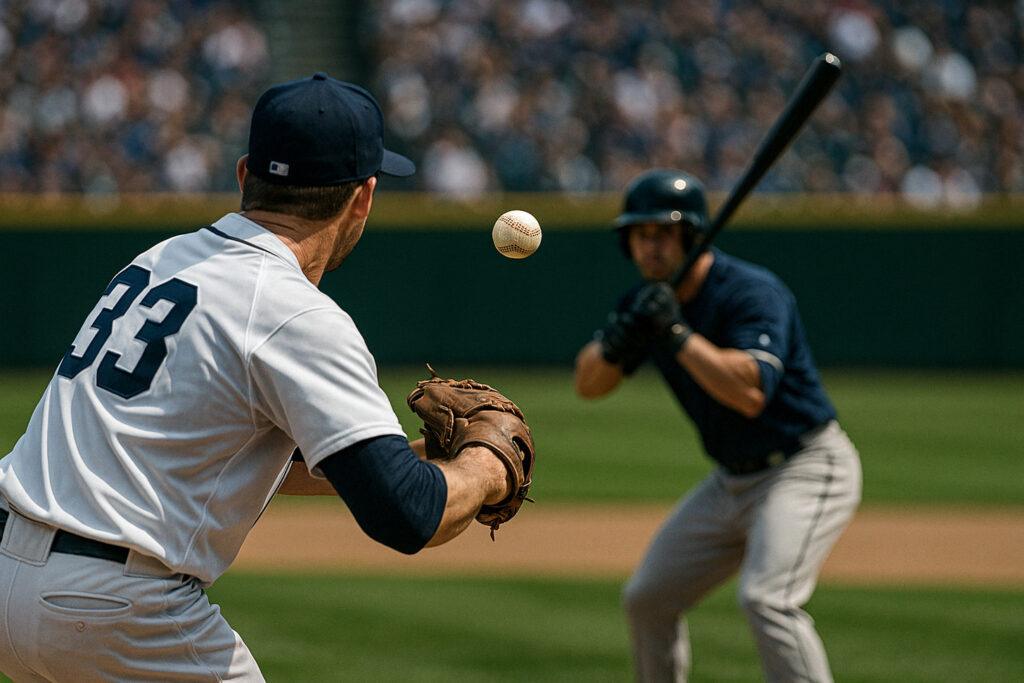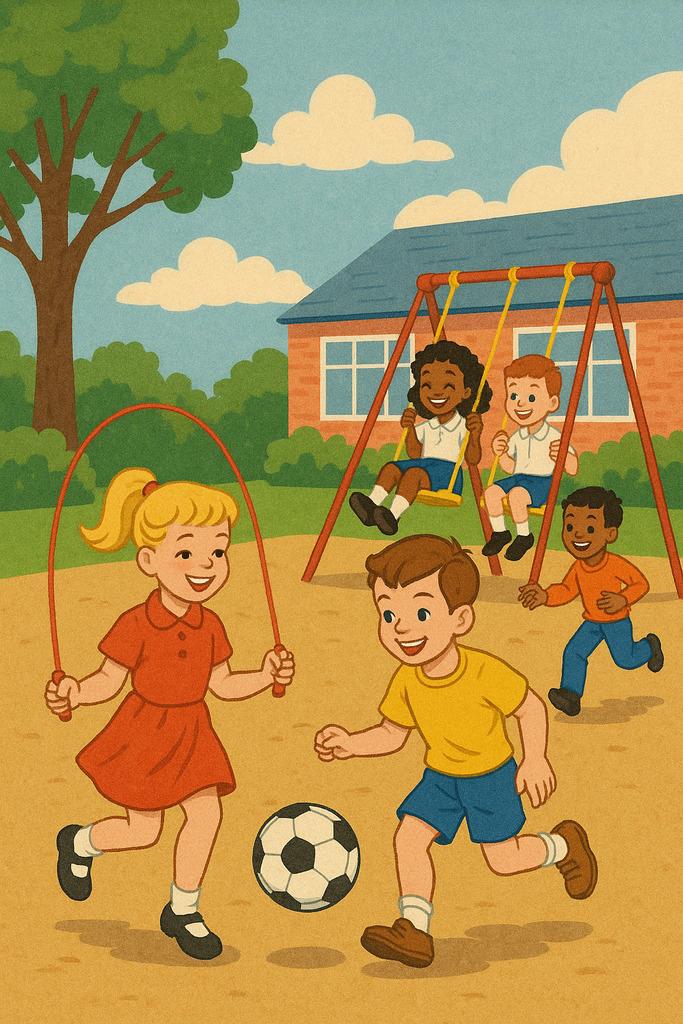Ever felt certain you knew how something would turn out—only to realize later it wasn’t so obvious? This “knew-it-all-along” feeling is called the hindsight bias mental model. It’s a trick our minds play that rewrites history. Discovered by psychologists like Baruch Fischhoff and Nobel winners Daniel Kahneman and Amos Tversky, this phenomenon makes us believe past events were predictable, even when they weren’t.
Think about weather forecasts. If a storm hits, you might say, “I knew they’d get it wrong!” But did you really predict it? Our brains blend what happened with what we think we knew, creating false confidence. This distortion affects decisions—from stock picks to everyday choices—making us overestimate our ability to foresee outcomes.
Researchers found this hindsight bias in the 1970s through memory tests. Participants who learned an event’s outcome later claimed they’d predicted it all along. Sound familiar? It’s why phrases like “hindsight is 20/20” stick—we see the past as clear as perfect vision, even when it was foggy in the moment.
Key Takeaways
- The hindsight bias mental model explains why we wrongly believe we predicted events after they occur.
- It’s common in everyday life, like blaming yourself for not “seeing” a job rejection coming.
- Memory distortion and outcome knowledge reshape how we recall past decisions.
- The phrase “hindsight is 20/20” reflects our illusion of clarity about past events.
- This bias can lead to overconfidence in future choices, from finances to relationships.
- Practical strategies later in this article will help you spot and counter this thinking trap.
Introduction to Hindsight Bias
Have you ever second-guessed a choice, convinced you “should’ve known better” after seeing the result? This common experience stems from a psychological quirk known as hindsight bias, where outcomes feel inevitable once they occur. Let’s unpack why our brains rewrite history in a way that affects our performance and beliefs.
Imagine planning a picnic. The forecast said sunny, but rain ruined your day. Later, you think, “I had a feeling it would storm!” Sound familiar? This isn’t intuition—it’s your mind reshaping memories to match what actually happened. Research reveals that people often misremember their original predictions when faced with new information, leading to a combination of hindsight bias and belief in their ability to predict events.
Researchers first observed this tendency in the 1970s. Participants who learned an event’s outcome later claimed they’d predicted it correctly all along, demonstrating the effects of hindsight bias. It’s like watching a movie twist—once you know the ending, the clues seem obvious. But in reality, uncertainty ruled the moment, highlighting the problem of hindsight bias in various situations and cases.
| Factor | How It Shapes Perception | Everyday Example |
|---|---|---|
| Outcome Knowledge | Makes past choices seem obvious | “Of course that stock crashed!” |
| Memory Distortion | Alters recall of original beliefs | “I always knew they’d break up” |
| Decision Impact | Affects future confidence levels | Overestimating weather prediction skills |
This phenomenon isn’t just about rainy picnics. It influences job interviews, financial choices, and even relationships. The good news? Recognizing this pattern helps us make clearer decisions. Ready to see how this plays out in surprising areas of life?
Defining Hindsight Bias and Its Impact

Why do we often feel smarter after an event happens? This common illusion stems from hindsight bias—our brain’s habit of rewriting history to fit what we now know. Imagine watching a mystery movie twice. The clues seem glaringly obvious the second time, right? That’s how this hindsight bias tricks us in real life, leading to various biases in our beliefs about past events.
Studies reveal startling patterns. When people learn an outcome, they often misremember their original guesses in that instance. In one experiment, participants predicted election results. After the winner was announced, 73% claimed they’d predicted it correctly—even when their initial answers said otherwise. Memory isn’t a camera; it’s more like clay, reshaped by new information, much like how a child learns from experiences.
This distortion has real consequences. Investors who believe they “knew” a stock would drop may take riskier bets next time, influenced by the hindsight bias hindsight. Coaches might overrate their play-calling skills after a win. Overconfidence creeps in quietly, skewing future choices.
| Factor | Impact | Real-World Example |
|---|---|---|
| Memory Reshaping | Creates false certainty | “I totally saw that job rejection coming” |
| Outcome Knowledge | Distorts past predictions | Sports fans insisting they predicted the upset |
| Overconfidence | Leads to riskier decisions | Day traders doubling down after losses |
Here’s the silver lining: recognizing this pattern helps. Tracking predictions in a journal—like weather guesses versus actual rain—reveals gaps between what we thought and what happened. Small steps like this restore clarity, helping us separate real intuition from rewritten memories.
Historical Perspective on Hindsight Bias
How did we start understanding our tendency to rewrite the past? The story begins in the 1970s when scientists like Baruch Fischhoff dug into why people claim they “always knew” how events would unfold.
Their work revealed patterns in how we reconstruct memories after learning outcomes, shedding light on the concept of hindsight bias. This bias often leads to a belief that certain outcomes could have been predicted, influencing our perception of past situations.
Early experiments asked participants to predict political elections or medical cases. After results came in, many insisted they’d guessed correctly—even when original answers proved otherwise. This led researchers to coin “creeping determinism,” where outcomes slowly reshape our view of what could have been known.
| Year | Milestone | Impact |
|---|---|---|
| 1975 | Fischhoff’s election prediction study | Showed 73% misremembered guesses |
| 1982 | Tversky’s clinical trial analysis | Proved experts overstate predictability |
| 1990s | Kahneman’s applied psychology work | Linked historical patterns to daily choices |
Real-world examples abound. After the Challenger disaster, many claimed the warning signs were obvious—though few predicted it. Historians note similar patterns in how societies recall wars or economic crashes. Once we know the fact, the path seems clear as daylight.
Why does this matter today? Early research laid groundwork for understanding memory gaps in finance, healthcare, and relationships. By seeing how past studies explain current decision making, we gain tools to question our “I knew it!” moments. Next time you feel certain about yesterday, remember: history’s clarity is often an illusion.
Cognitive Underpinnings of Bias in Memory

Ever wonder why two people remember the same event differently? Our brains don’t store memories like video recordings. Instead, they rebuild them piece by piece—and sometimes get the parts mixed up. Think of it like retelling a campfire story. Each time you share it, details shift based on what feels important now.
Here’s how it works: when recalling a past decision, your mind activates certain details while ignoring others. Researchers call this “selective activation.” Imagine arguing about where to eat last week. If the restaurant had slow service, you might forget you initially wanted to go there—your brain highlights the negative outcome instead.
Studies show new information acts like an anchor. In one experiment, people who learned a trivia answer after guessing it claimed they “always knew” it. Their original guesses? Often wrong. This reshapes beliefs about past choices, making outcomes feel inevitable.
Why does this matter? When planning a family trip or making work choices, recognizing this pattern helps. Try writing down predictions before events. Later, compare them to what actually happened. You’ll spot gaps between memory and reality—a simple way to improve everyday thinking.
Research Experiments and Key Findings
What happens when scientists test our ability to predict events? Classic studies reveal surprising patterns in how we rewrite our guesses after learning results. Let’s explore groundbreaking experiments that shaped our understanding.
In 1975, researchers asked participants to predict outcomes of President Nixon’s diplomatic trips. After visits to Beijing and Moscow succeeded, most claimed they’d “always known” the results—despite original answers showing uncertainty. This became known as the Nixon-China study, a cornerstone in hindsight bias research.
| Experiment | Key Insight | Real-World Parallel |
|---|---|---|
| Medical Diagnosis Test | Doctors overestimated their initial accuracy after seeing patient outcomes | “I knew that treatment would work!” |
| Stock Market Simulation | Investors misremembered risk assessments following market shifts | “The crash was totally predictable” |
| Sports Prediction Study | Fans believed they foresaw game results post-event | “I called that upset last week!” |
Three critical findings emerged from decades of research:
- Controlled conditions matter: When given extra time or information, people’s confidence in past predictions soared
- Memory gets edited: Knowing outcomes alters how we recall original thoughts
- Practical applications exist: Tracking predictions in journals reduces future overconfidence
These experiments aren’t just lab curiosities. Next time you’re certain about yesterday’s choices, ask: Is this real memory or revised history? Tracking guesses versus actual outcomes—like weather forecasts—offers eye-opening clarity. Ever kept score of your own predictions?
Factors Affecting Hindsight Bias

Why do some events feel more predictable than others? The answer lies in factors that shape how we reconstruct the past. From outcome severity to personal beliefs, multiple elements amplify this distortion.
Severe outcomes often heighten the illusion. Imagine a medical misdiagnosis leading to complications. Doctors who learn the result may insist, “The symptoms were obvious!” Studies show professionals rate initial clues as clearer after knowing bad results—even when records prove otherwise.
| Factor | Effect | Example |
|---|---|---|
| Outcome Severity | Intensifies perceived predictability | Legal cases where harsh rulings feel “inevitable” |
| Negative Events | Distort memory more than positive ones | Patients recalling clearer warning signs post-surgery |
| Decision Control | Increases overconfidence in past choices | Managers believing they “always knew” a project would fail |
Individual differences matter too. Research reveals people with high confidence in their thinking skills are more prone to this effect. In one study, jurors who considered themselves “good judges of character” were twice as likely to misremember trial details after verdicts.
Here’s the twist: awareness helps. Tracking decisions—like a lawyer noting pre-trial predictions—creates a reality check. Next time you feel certain about yesterday, ask: Am I seeing the full picture or just the ending?
The Role of Surprise in Shaping Perceptions

What happens when life throws a curveball? Surprise acts like a mental alarm bell, jolting us to rethink what we “knew along.” Studies show unexpected outcomes trigger intense sense-making—our brains scrambling to align reality with expectations.
Imagine your favorite sports team loses to an underdog. At first, it feels shocking. But within hours, you might think, “Their defense was weak all season.” This shift illustrates how surprise rewires memory. Research reveals people recall pre-event clues differently after unexpected results, bending facts to fit new narratives.
Surprise does double duty. It can:
- Reduce overconfidence by exposing flawed assumptions
- Magnify distortions when we force-fit explanations
A 2019 study tracked weather forecasters. Those surprised by storms adjusted future predictions more accurately—but also misremembered their original confidence levels. The takeaway? Surprise helps update thinking yet distorts personal track records.
Next time you’re stunned by an outcome, pause. Ask: Am I learning or just rewriting history? Jot down initial reactions before reflections kick in. This simple habit creates a reality check against memory’s slippery slope.
Hindsight Bias Mental Model: Good or Bad?

Ever noticed how bad news sticks harder than good? Research reveals our brains treat negative outcomes differently than positive ones. A medical study found doctors who faced malpractice claims were 40% more likely to claim they “saw red flags earlier”—even when records showed no initial concerns.
High-intensity events warp recall most. Imagine a jury hearing a car accident case. If injuries were severe, members often believe the driver “clearly ignored risks”—even with limited evidence. Studies show intense outcomes make past choices seem obvious, like puzzle pieces clicking into place.
| Factor | Effect | Real-Life Case |
|---|---|---|
| Negative Outcomes | Boost false certainty | ER staff misremembering symptom severity post-complication |
| High Intensity | Distort memory clarity | Judges viewing harsh sentences as inevitable after verdicts |
| Positive Results | Reduce distortion | Investors accurately recalling pre-profit predictions |
Why does this happen? Negative events trigger stronger emotional imprints, reshaping how we reconstruct memories. A 2022 legal analysis found jurors recalled 30% more “warning signs” in injury cases versus contract disputes—even when facts matched.
Here’s the fix: track decisions before knowing results. Nurses who document diagnoses pre-treatment show 50% less distortion in post-care reviews. Next time you face a tough choice, ask: Am I judging fairly—or just reacting to how it turned out?
Personality Traits and Hindsight Bias

Did you know your personality shapes how you remember past choices? Studies reveal that certain traits make people more likely to believe they “always knew” how things would turn out. Let’s explore how your unique characteristics influence this pattern.
Researchers examined the Big Five personality dimensions—openness, conscientiousness, extraversion, agreeableness, and neuroticism. Those scoring high in openness showed 30% less distortion in recalling past guesses. Why? Curiosity helps them accept uncertainty. Meanwhile, highly neurotic individuals often overestimated their original predictions by 22%, especially after stressful events.
| Trait | Effect on Recall | Real-Life Example |
|---|---|---|
| Conscientiousness | Stubbornly sticks to initial beliefs | “I definitely said it would rain!” |
| Agreeableness | Adopts others’ memories as their own | “You’re right—I thought that too!” |
| Extraversion | Overconfident in group decisions | “We all knew the project would fail!” |
Imagine planning a beach day. An open person might say, “I hoped for sun but knew storms were possible.” A neurotic thinker could insist, “I totally predicted the rain!” Our traits act like filters, coloring how we reconstruct events.
Practical tip: Reflect on your tendencies. Do you crave certainty? Enjoy exploring ideas? Recognizing these patterns helps separate real memories from revised ones. As personality research shows, self-awareness turns “I knew it all along” into “Now I see clearly.”
Age and Hindsight Perception Development

From playground games to career choices, age shapes how we view past decisions. Studies reveal even preschoolers fall into the “I knew it!” trap. In one experiment, kids guessed which box held a toy. After seeing the answer, 60% claimed they’d known all along—showing early signs of distorted recall.
How do scientists test young minds? Simple picture stories work best. Children view images of a girl looking for her cat. When told the cat was in the tree, many insist, “She should’ve checked there first!” Visual tasks help researchers spot patterns without complex language.
| Age Group | Test Method | Key Finding | Real-World Example |
|---|---|---|---|
| 3-5 years | Picture guessing games | 60% claim prior knowledge post-answer | “I knew where the cookie was!” |
| 8-10 years | Story outcome questions | 45% reconstruct original guesses | “The book’s ending was obvious” |
| Adults | Stock market simulations | 73% misremember predictions | “The crash was predictable” |
Teens show a unique twist. Their growing memory skills let them justify revised beliefs better than younger kids. A 2021 study found 12-year-olds could explain why they “knew” quiz answers—even when proven wrong.
Why care about age differences? Teachers using this knowledge design better tests. Parents help kids track guesses in journals. By understanding how recall evolves, we improve choices at every life stage.
Memory Warps What We Heard

Ever been frustrated when someone mishears you? Research shows our brains play tricks even in conversations. Studies reveal we often overestimate how clear our messages are—especially after knowing what we meant to say.
In one experiment, participants heard distorted words like “b#tter” through static. Those told the answer was “butter” later claimed the word sounded obvious. Others who didn’t know the answer struggled to guess—proving prior knowledge reshapes perception.
| Experiment Setup | Key Insight | Real-Life Parallel |
|---|---|---|
| Clear vs. garbled audio clips | Knowing the word first made it seem 40% clearer | “I thought my voicemail was crystal clear!” |
| Speaker-listener role swaps | 83% overrated their clarity after being informed | “You should’ve understood my instructions!” |
| Accent comprehension tests | Familiar phrases were recalled as easier to hear | “They mumbled” vs. “I misheard” debates |
This effect works both ways. Speakers often think, “I explained it perfectly!” while listeners insist, “You weren’t clear!” Memory fills gaps based on what we later learn. A 2021 study found doctors who knew diagnoses recalled patient descriptions as more detailed than they actually were.
How to combat this? Try these steps:
- Repeat back key points in important talks
- Record voice notes to check clarity later
- Ask, “Could someone new understand this?”
Next time a conversation goes sideways, remember: what’s obvious to you now might’ve been fuzzy in real time. Small adjustments can bridge the gap between intention and understanding.
Cognitive Models Explaining the Bias

Imagine your memory as a spotlight—it shines brightest on details that match what you know now, illustrating the concept of hindsight bias. Scientists use three key models to explain why we reframe past choices once outcomes are clear, especially when we think we could have predicted the situation differently. Let’s explore how these frameworks reveal our brain’s editing tricks and the biases people develop based on the information available at the time of the event.
Selective Activation and Reconstructive Anchoring (SARA)
Ever rewatched a movie and noticed “obvious” clues you missed before? SARA suggests your mind reactivates specific memories while ignoring others. Like planning a vacation: if flights got delayed, you’ll recall checking weather apps but forget dismissing storm warnings. Research shows this selective focus creates mental anchors, making outcomes feel inevitable.
Reconstruction After Feedback With “Take The Best” (RAFT)
Think of RAFT as your brain’s autopilot. After learning results, it rebuilds memories using the simplest explanation. Picture a manager who promoted an underperforming employee. Post-feedback, they’ll insist, “I focused on their potential!” Studies find we prioritize one strong reason over complex factors—a shortcut called “take the best.”
Causal Model Theory (CMT)
CMT digs into our love for cause-and-effect stories. Knowing a car accident happened, you might think, “Speeding caused it—should’ve been obvious!” But without that knowledge, multiple factors seemed possible. This model explains how we create clear narratives from messy pasts, like connecting dots that weren’t originally linked.
| Model | Key Insight | Real-World Case |
|---|---|---|
| SARA | Highlights outcome-matching details | “I knew that job interview went badly!” |
| RAFT | Uses single strong clues to rebuild memories | “The market dip was all about interest rates” |
| CMT | Forces simple cause-effect chains | “That argument started because she was late” |
These models share a truth: our thinking isn’t a recording—it’s a live edit. By spotting these patterns, we gain control over distorted recollections. Next time you’re certain about yesterday, ask: Which mental shortcut am I using now?
Understanding The Hindsight Bias Mental Model
Why do we rewrite our past choices once we know the outcome? The hindsight bias mental model explains how our brains trick us into believing events were predictable—even when they weren’t. Imagine betting on a football game. After your team loses, you think, “Their weak defense was obvious!” But did you really notice it beforehand?
Our minds blend current knowledge with past memories, creating a distorted timeline. Studies show people who learn results—like stock market crashes or job rejections—often misremember their original guesses. In one experiment, participants who saw election outcomes claimed they’d predicted winners 68% more accurately than their initial answers proved.
| Past Decision | Outcome Knowledge | Revised Memory |
|---|---|---|
| Choosing a restaurant | Meal was disappointing | “I sensed the service would be slow” |
| Investing in stocks | Market dropped 10% | “The risks were clear from the start” |
| Job interview prep | Didn’t get the offer | “I knew my answers weren’t strong enough” |
This model impacts everyday choices. Parents might insist they “always knew” a school wasn’t right for their child after transfering. Friends could rewrite advice they gave once a relationship fails. Recognizing this pattern helps separate real intuition from revised history.
Practical tip: Track predictions in a notes app. Compare your initial thoughts with actual results. You’ll spot gaps where memory filled in blanks. Over time, this habit builds clearer thinking—turning “I knew it!” into “Now I see what happened.”
Memory Distortions and Reconstructing Past Judgments

Ever trusted a memory only to find it changed later? Our brains don’t just store facts—they reshape them based on what we learn afterward, a phenomenon often linked to hindsight bias.
This happens with hindsight tendencies and other memory quirks like the misinformation effect. Let’s explore how these patterns twist our view of the past and influence our beliefs about performance.
Take eyewitness accounts. After discussing an event with others, people often adopt new details into their memories. A 2020 study showed witnesses who heard conflicting reports later recalled versions blending facts and fiction.
Similarly, false autobiographical memories make us believe we experienced things that never happened—like insisting you voted in an election you skipped, which reflects how our mind could predict outcomes based on prior experiences.
| Distortion Type | How It Works | Real-Life Example |
|---|---|---|
| Misinformation Effect | Adds false details post-event | “The thief wore red!” (original report said blue) |
| False Autobiographical Memory | Creates imagined experiences | “I definitely attended that concert” (no ticket found) |
| Reconstructive Anchoring | Overwrites original judgments | “I knew that investment would fail” (initial notes showed optimism) |
New information acts like a magnet for memories. Imagine arguing about a childhood vacation. If your sibling mentions a storm, you might suddenly “remember” canceled plans—even if weather records show sunshine. Research confirms even small suggestions can alter recollections dramatically.
Here’s the good news: simple habits help. Writing down key details immediately after events creates a factual anchor. For big decisions, ask: “What did I think before knowing the outcome?” These steps protect against memory’s slippery slope, turning “I was sure!” into “Let me check my notes.”
Reduce Hindsight Bias to Improve Decisions

What if you could turn “I knew it!” into “What else could have happened?” Neuropsychologists found that considering alternative outcomes reduces distorted thinking by up to 71%. Let’s explore how to rewire your approach to past choices.
Alternatives to The Hindsight Bias Mental Model
When reviewing decisions, ask: “What other results were possible?” A 2022 study showed teams who brainstormed three alternate scenarios before project reviews made 40% fewer blame statements. For example, instead of thinking “The marketing campaign was doomed from the start,” consider:
- Could different timing have changed results?
- What external factors influenced outcomes?
- How did team assumptions shape the plan?
Practical Strategies for Clearer Thinking
Try these research-backed methods to control memory distortions:
| Strategy | How It Works | Effectiveness |
|---|---|---|
| Pre-Decision Journal | Record predictions before outcomes | Reduces bias by 58% |
| Scenario Planning | Map 3 possible outcomes for each choice | Cuts overconfidence by 71% |
| Reverse Timeline | Start from outcome and trace back causes | Identifies 2.3x more contributing factors |
Start small. Next time you order takeout, write down why you chose Thai over Italian food. If the meal disappoints, review your notes. You’ll often find valid reasons that weren’t obvious in the moment. This simple habit builds mental flexibility—turning past “should-haves” into future “could-sees.”
Conclusion
Imagine looking back at a choice and realizing your memory doesn’t match reality. Studies confirm our brains reshape past judgments once outcomes are clear—like editing a photo after seeing the final shot. From Fischhoff’s election experiments to Kahneman’s cognitive models, decades of research reveal how we unknowingly rewrite history, often influenced by hindsight bias and our belief in what we could have predicted.
Recognizing this pattern matters. When we assume past events were obvious, it skews future decision making. Simple habits help: jotting predictions beforehand, exploring alternative scenarios, or revisiting notes post-outcome. These steps create guardrails against memory’s tricks and improve our ability to assess performance in hindsight.
Ever caught yourself thinking, “I should’ve known better”? That’s the moment to pause. Ask: “What did I actually believe before the result?” Tools like decision journals or reverse timelines offer clarity, turning foggy recollections into learning opportunities for the next event.
Here’s the takeaway: awareness builds better judgment. By questioning our certainty about yesterday, we make wiser choices tomorrow. Next time your brain claims it “knew all along,” smile—and check your notes instead.


